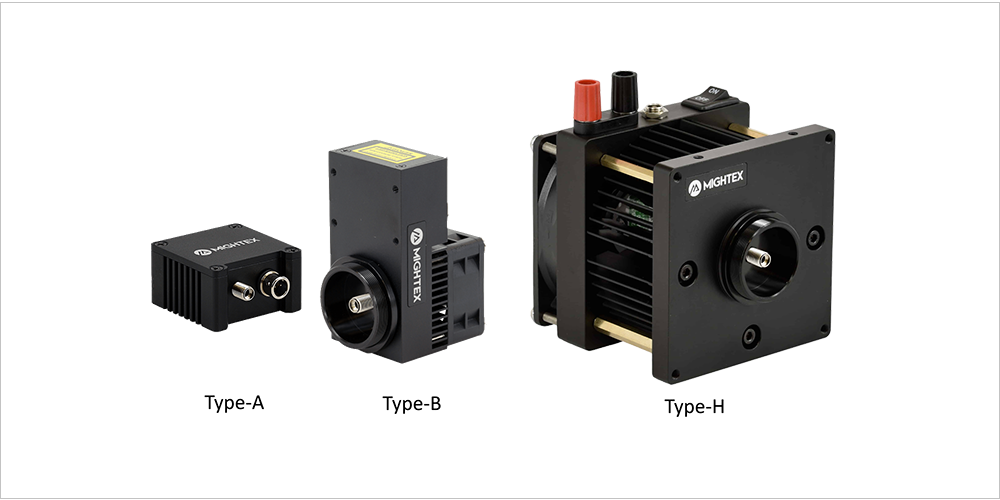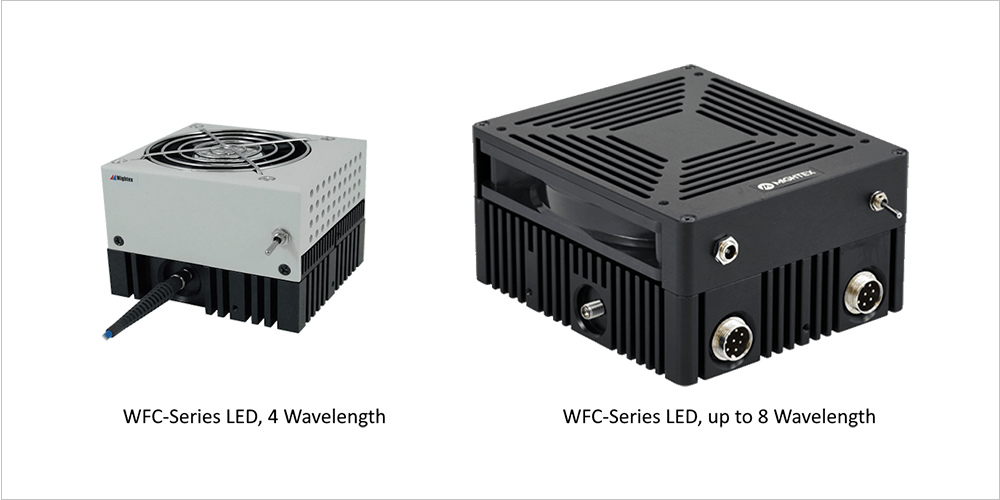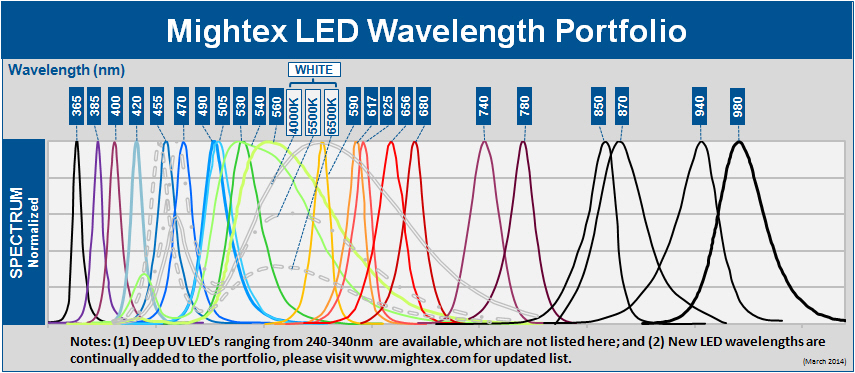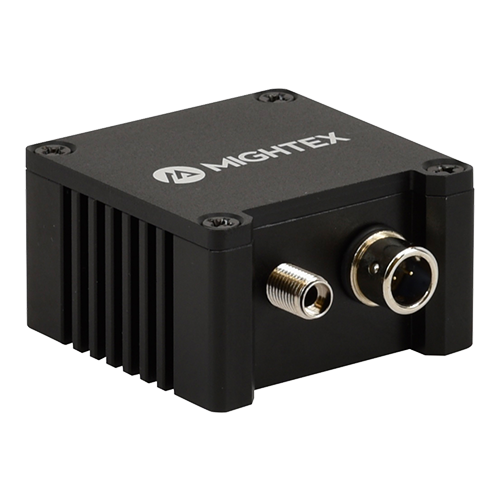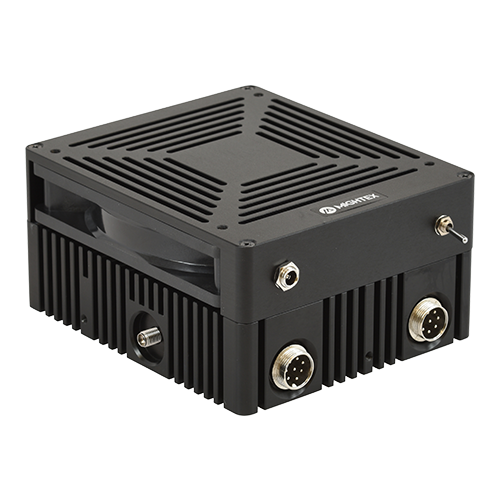Mightex fiber-coupled light sources are modularized fully-customizable turn-key solutions for optogenetics, fluorescence excitation, and other biophotonics applications. For example, precisely-timed and high-intensity light pulses are required in optogenetics experiments to activate channelrhodopsins (ChR2, ChR1 etc.) and halorhodopsins (NpHR) in order to excite and inhibit neurons. Mightex has developed a comprehensive portfolio of FCS-series single-wavelength and WFC-series multi-wavelength fiber-coupled LEDs, in order to meet a wide range of bioscience research needs.
Key features:
- High-power UV/VIS/NIR/white fiber-coupled LEDs
- Single- or multi-wavelength models, with up to 8 wavelengths in one fiber
- Interchangeable fiber with SMA connector
- No moving parts in optical path
- Multiple mounting features for lab and OEM applications
- Optional LED controllers with manual, analog, or TTL/software controls
- Compact, machined metal housing with integrated heat sink
- Locking electrical connector
Mightex’s fiber-coupled LEDs have enabled researchers all over the world
to publish >300 papers.
How to Select a Fiber-Coupled LED for your Application?
Mightex fiber-coupled light sources are modularized fully-customizable turn-key solutions for optogenetics, fluorescence excitation, and other biophotonics applications. Precisely-timed and high-intensity light pulses are required in optogenetics experiments to activate channelrhodopsins (ChR2, ChR1 etc.) and halorhodopsins (NpHR) in order to excite and inhibit neurons. To meet these requirements, Mightex has developed a proprietary “IntelliPulsing” technology to allow Mightex’s fiber-coupled LED light sources to output significantly higher power in pulse mode than what the LEDs are rated for in CW mode.
Features:
- High-power UV/VIS/NIR/white fiber-coupled LED’s
- Interchangeable fiber with SMA connector
- No moving parts in optical path
- Multiple mounting features for lab and OEM applications
- Optional LED controllers
- Compact, machined metal housing with integrated heat sink
- Locking electrical connector
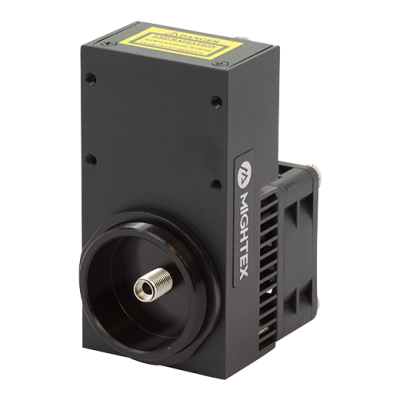
Optical fiber not shown in the photo.
2. Select LED Configuration
3. Select LED Controller
Manual/Analog for Fiber-Coupled LEDs
BLS-1000-2, BLS-3000-2, BLS-13000-1, and BLS-18000-1
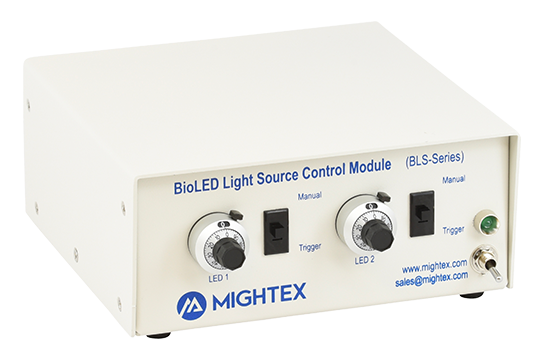
Manual/Software/Analog/TTL for Fiber-Coupled LEDs
Add a PolyEcho Multi-Channel Intelligent Control Module (PEC-CM12-U)
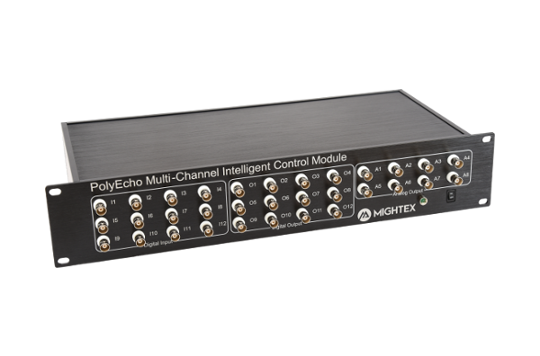
Optogenetics Starter Kit
Mightex’s optogenetics starter kits are ready-to-use turn-key solution for ChR2 stimulation, and they feature fiber-coupled LEDs with super-high output power (up to 7.2mW with a 200µm fiber) and ultra-low power variation (<2%) during rotation.
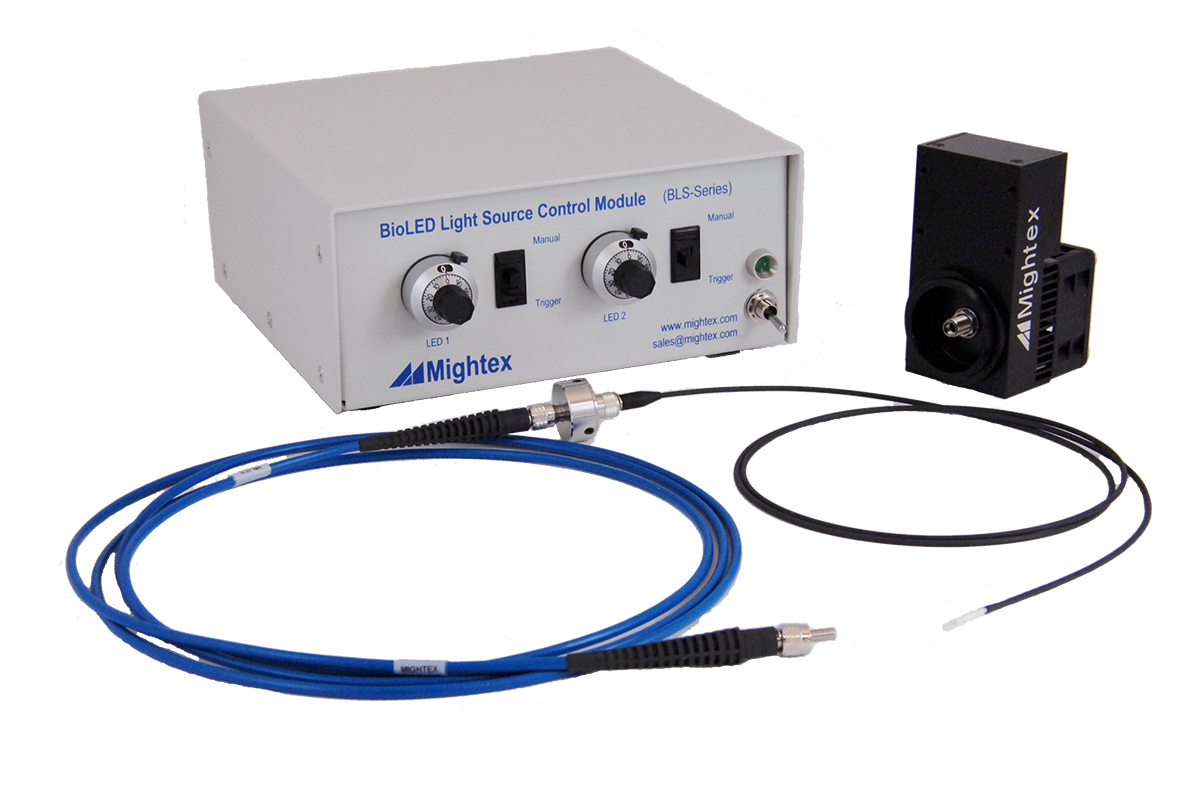
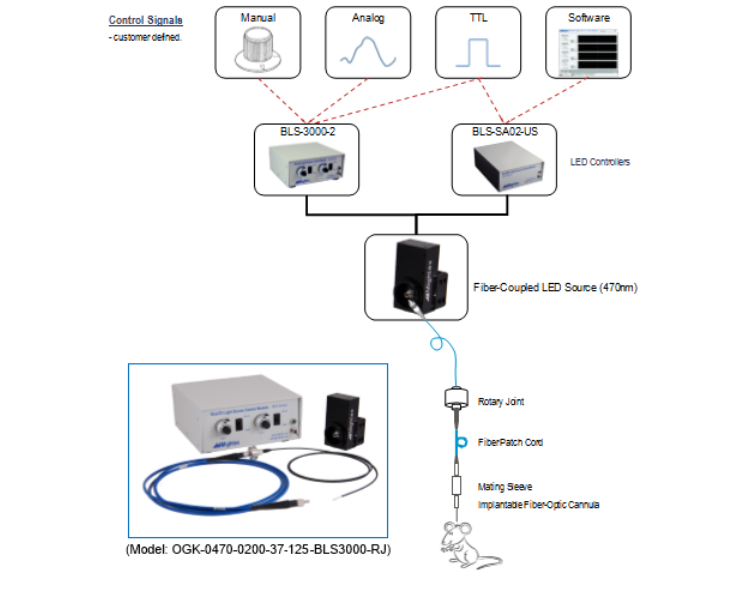
| Starter Kit P/N | OGK-0470-0200-37-250-BLSSA02 | OGK-0470-0200-37-250-BLS3000 | OGK-0470-0200-37125-BLSSA02 | OGK-0470-0200-37-125-BLS3000 | OGK-0470-0200-37-250-BLSSA02-RJ | OGK-0470-0200-37-250-BLS3000-RJ | OGK-0470-0200-37-125-BLSSA02-RJ | OGK-0470-0200-37-125-LS3000-RJ |
|---|---|---|---|---|---|---|---|---|
| Light Source | Model#: BLS-FCS-0470-101, 470nm fiber-coupled LED |
|||||||
| Fiber Core Size | Φ200μm |
|||||||
| LED Controller | BLS-SA02-US | BLS-3000-2 | BLS-SA02-US | BLS-3000-2 | BLS-SA02-US | BLS-3000-2 | BLS-SA02-US | BLS-3000-2 |
| Cannula Ferrule Size | Φ2.5mm | Φ2.5mm | Φ1.25mm | Φ1.25mm | Φ2.5mm | Φ2.55mm | Φ1.25mm | Φ1.25mm |
| Patch Cable | Standard | Integrated Rotary Joint |
||||||
| Cannula Output Power1 | 7.6mW | 7.6mW | 6.8mW | 6.8mV | 4.4mV | 4.4mV | 4.0mV | 4.0mV |
| Variation in Output Power During Rotation2 | N.A ( system does not include a rotary joint) | ±2% |
||||||
- Output power is measured at the cannula at maximum driving current. For BLS-SA02-US LED controller, the maximum driving current using Intellipulsing;
- Output power variation during rotation of the rotary joint.
Fiber-Coupled LED Application Examples
Liu Y, Ohshiro T, Sakuragi S, Koizumi K, Mushiake H, Ishizuka T & Yawo H
In an effort to better understand how multiple afferent inputs are integrated in the brain, Liu et al., developed a transgenic rat line that expressed Channelrhodopsin-2 within mechanoreceptive neurons such that they could produce illusions of touch within the rat brain using light. To study how the rat brain could integrate many different whisker inputs, they created a system using Mightex’s fiber coupled LEDs to stimulate light sensitive whisker pads while electrically recording from the brain region of rats known to integrate somatosensory inputs (i.e. barrel cortex).
Wiegert JS, Pulin M, Gee CE, & Oertner TG
To determine how plasticity could affect synaptic stability, Wiegert et al., recorded from CA1 neurons, both electrically and optically, while stimulating light sensitive CA3 inputs using Mightex’s fiber-coupeld LED. By combining optogenetics, electrophysiology and two-photon imaging, the group was able to find links between certain plasticity inducing protocols and how they affected synaptic survival.
Ketzef M, Spigolon G, Johansson Y, Bonito-Oliva A, Fisone G, & Silberberg G
Ketzef et al., sought to better understand how dopamine depletion effects sensory processing in different types of striatal neurons. In order to identify different types of neurons in real time, Ketzef et al., used the ‘optopatcher’, an electrode holder that allows for simultaneous intracellular recordings and optical manipulation, coupled to Mightex’s fiber coupled LEDs.
LED Inquiry Form
Fill out the form below and we will contact you!
"*" indicates required fields





